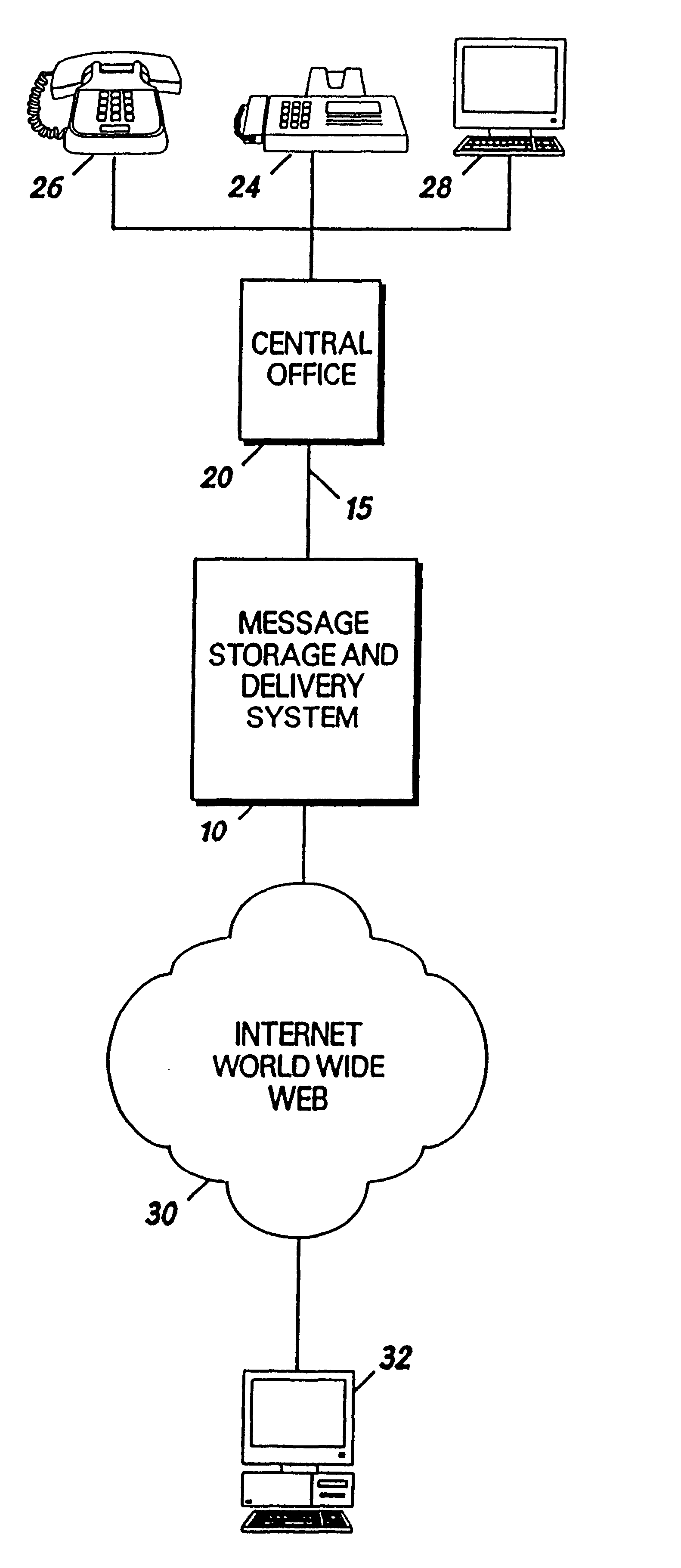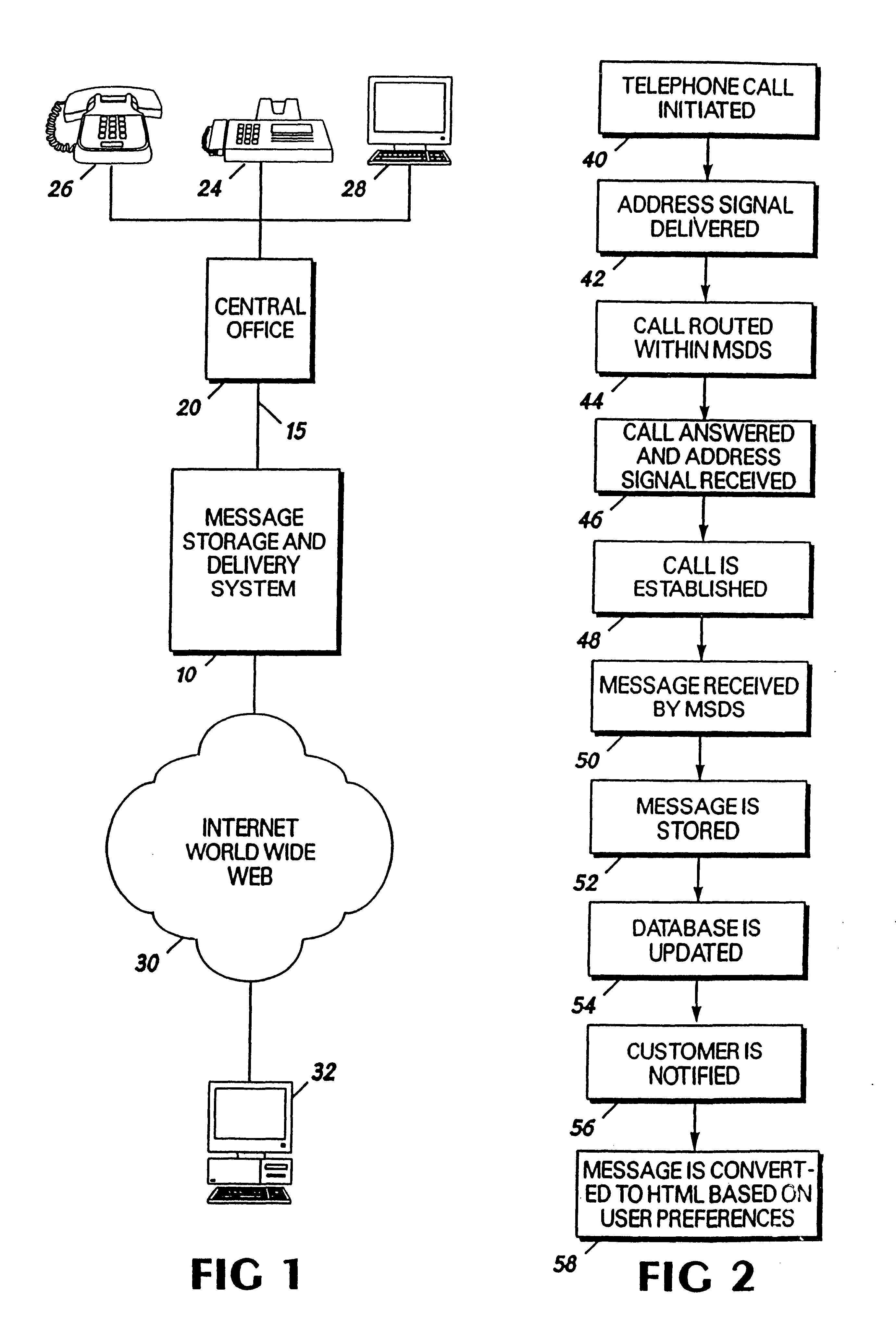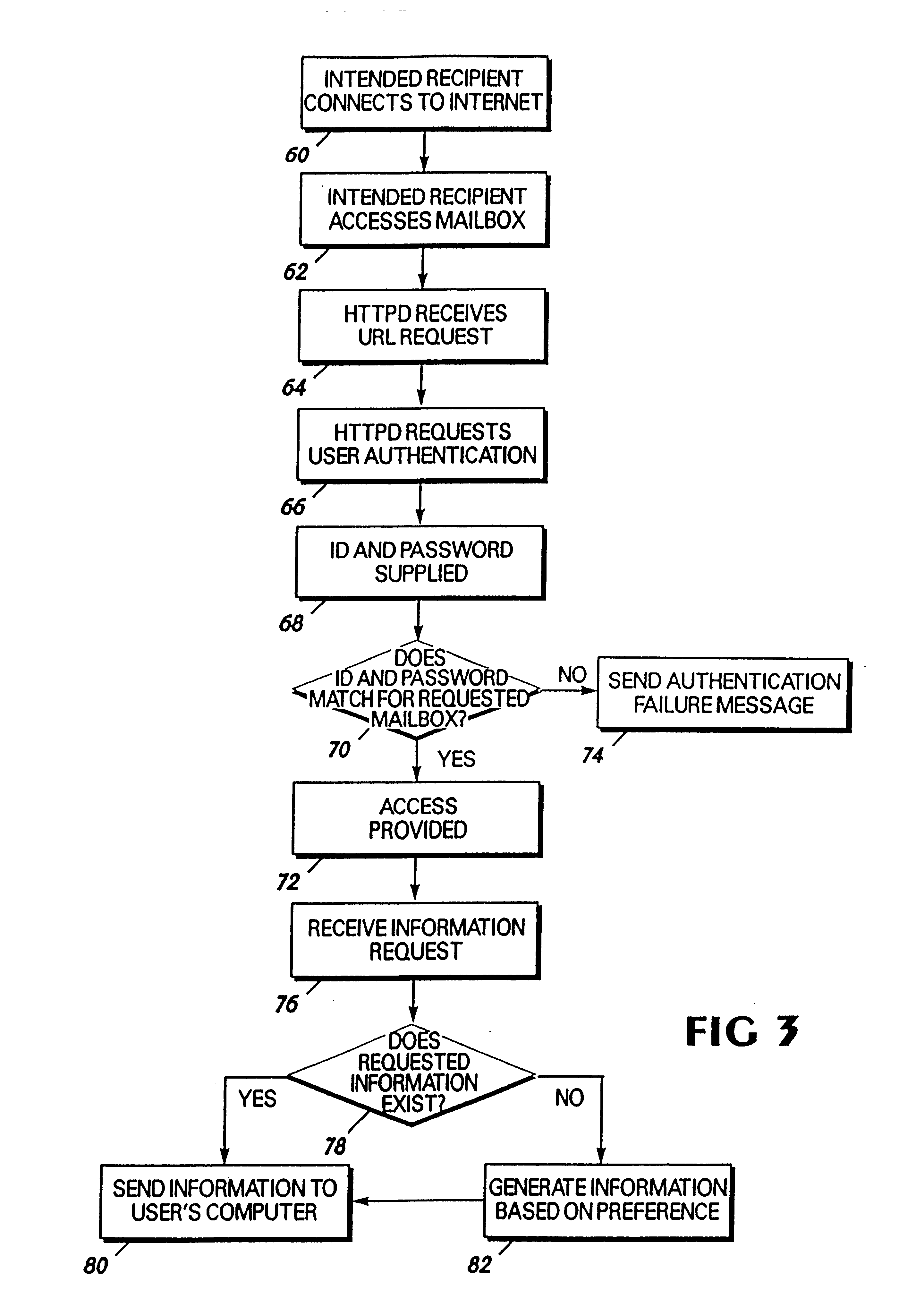Even though the facsimile machine is heavily relied upon by businesses of all sizes and is quickly becoming a standard piece of office equipment, many businesses or households cannot receive the benefits of the facsimile machine.
Unfortunately, for a small business or for a private household, a facsimile machine is a rather expensive piece of equipment.
In addition to the cost of
purchasing the facsimile machine, the facsimile machine also requires toner, paper, maintenance, as well as possible repairs.
For others who are constantly traveling and who do not have an office, it may be impractical to own a facsimile machine.
Therefore, many businesses and households are at a
disadvantage since they do not have access to a facsimile machine.
Because a facsimile machine can be such an asset to a company and is heavily relied upon to quickly transmit and receive documents, a problem exists in that the machines are not always available to receive a facsimile message.
This inability to connect with a facsimile machine can be frustrating, can consume quite a bit of the person's time, and prevent the person from performing more productive tasks.
In addition to labor costs and a reduction in office efficiency, a facsimile machine may present costs to businesses that are not readily calculated.
These costs include the loss of business or the loss of goodwill that occurs when the facsimile machine is not accessible by another facsimile machine.
These costs can occur for various reasons, such as when the facsimile machine is out of paper, when the machine needs repairing, or when the facsimile machine is busy with another message.
These costs occur more frequently with some of the smaller businesses, who are also less able to incur these expenses, since many of them have a single phone line for a telephone
handset and the facsimile machine and thereby stand to lose both telephone calls and facsimile messages when the
single line is busy.
These losses, however, cannot be completely eliminated since the machines can still experience a demand which exceeds their capabilities.
The facsimile machines may be unattended and a received facsimile message may not be noticed until a relatively long period of time has elapsed.
Further, even for those machines which are under constant supervision, the routing procedures established in an office may
delay the delivery of the documents.
It is therefore a problem in many offices to quickly
route the facsimile message to the intended recipient.
The nature of the facsimile message also renders it difficult for the intended recipient to receive a sensitive message without having the message exposed to others in the office who can intercept and read the message.
It was therefore difficult to maintain the contents of a facsimile message confidential.
In an office with a large number of employees, it may also be difficult to simply determine where the facsimile message should be routed.
This type of system, however, burdens the sender, who may very well be a
client or customer, by requiring the sender to take special steps or additional steps to transmit a facsimile message.
These systems are therefore not very effective or desirable.
The various systems for routing facsimile messages, and possibly messages of other types received in the office, are very sophisticated and expensive systems.
While these
office systems are desirable in that they can effectively
route the messages at the office to their intended recipients, the systems are extremely expensive and only those companies with a great number of employees can offset the costs of the system with the benefits that the system will provide to their company.
Thus, for most businesses, it still remains a problem to effectively and quickly
route messages to the intended recipients.
It also remains a problem for most businesses to route the messages in a manner which can preserve the confidential nature of the messages.
Even for the businesses that have a
message routing system and especially for those that do not have any type of system, it is usually difficult for a person to retrieve facsimile messages while away from the office.
Consequently, the person must call into the office during normal
business hours while someone is in the office and is therefore limited in the time that the information in a facsimile message can be relayed.
Since this accessible machine is often a facsimile machine at another business or at a hotel where the person is lodging, it is difficult for the person to receive the facsimile message without risking disclosure of its contents.
Further, since someone at the person's office must remember to send the message and since someone at the accessible facsimile machine must route the message to the person away from the office, the person may not receive all of the facsimile messages or may have to wait to receive the messages.
While these charges are certainly not substantial, the charges are nonetheless expenses incurred while the person is away from the office.
Overall, while the facsimile machine is an indispensable piece of equipment for many businesses, the facsimile machine presents a number of problems or costs.
Many businesses or households are disadvantaged since they are unable to reap the benefits of the facsimile machine.
For the businesses that do have facsimile machines, the businesses must incur the normal costs of operating the facsimile machine in addition to the costs that may be incurred when the facsimile machine or machines are unable to receive a message.
Further, the facsimile messages may not be efficiently or reliably routed to the intended recipient and may have its contents revealed during the routing process.
The costs and problems in routing a facsimile message are compounded when the intended recipient is away from the office.
Many of the problems associated with facsimile messages are not unique to just facsimile messages but are also associated with voice mail messages and
data messages.
For those businesses that have voice mail, the person away from the office must call in and frequently incur long distance charges.
Consequently, the recipient's computer is usually only able to receive a data message during normal office hours.
Many households and also businesses may not have a dedicated data line and must switch the line between the phone, computer, and facsimile.
The
retransmission of the data message to another location, such as when someone is away from the office, only further complicates the delivery.
It is therefore frequently difficult to transmit and receive
data messages and is also difficult to later
relay the messages to another location.
Although tracking correspondence of printed materials is relatively easy, non-traditional correspondence, such as facsimile messages, e-mail messages, voice messages, or
data messages, are more difficult to track and
record.
For example, facsimile messages may be difficult to track and
record since the messages may be received on
thermal paper, which suffers from a
disadvantage that the printing fades over time.
Also, accurate tracking of facsimile messages is difficult since the facsimile messages may only be partially printed at the facsimile machine or the messages may be lost or only partially delivered to their intended recipients.
Facsimile messages also present difficulties since they are often delivered within an organization through different channels than ordinary mail and thus easily fall outside the normal
record keeping procedures of the company.
Voice mail messages are also difficult to track and record.
This transcribed copy of the voice message, however, is less credible and thus less desirable than the original voice message since the transcribed copy may have altered material or may omit certain portions of the message.
In addition to facsimile and voice mail messages, data messages are also difficult to track and record.
It is therefore difficult to maintain accurate records of all data transfers between itself and another entity.
 Login to View More
Login to View More  Login to View More
Login to View More 


